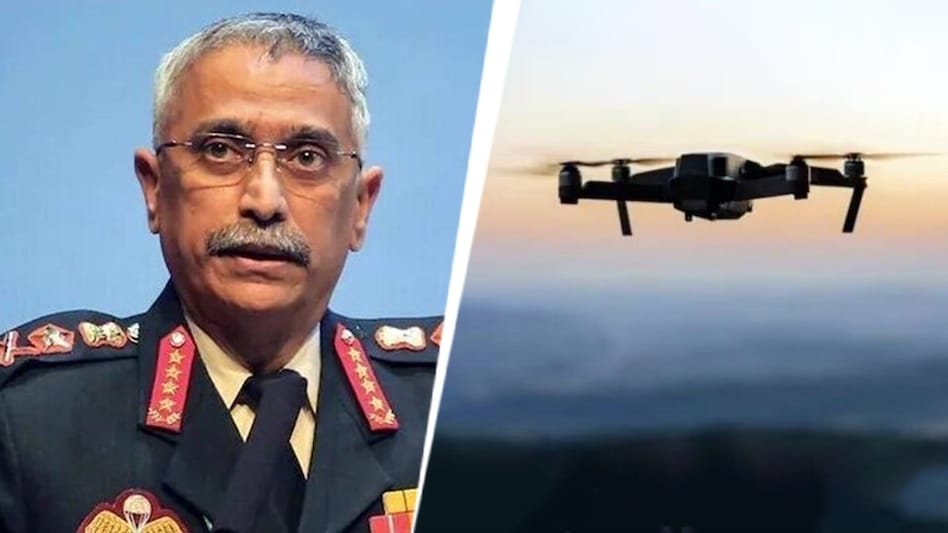 Former Army Chief General Manoj Mukund Naravane
Former Army Chief General Manoj Mukund Naravane
 Former Army Chief General Manoj Mukund Naravane
Former Army Chief General Manoj Mukund NaravaneFormer Army Chief General Manoj Mukund Naravane has called for urgent policy and legislative action to counter emerging drone threats to critical infrastructure in India, following Ukraine's long-range drone strike on multiple Russian airbases in a covert operation codenamed Operation Spider's Web.
In an opinion piece in The Print, General Naravane wrote: "What these drone attacks have magnified is that there is no classical front line and that the entire country is the battlefield." He urged the government to declare 'no-fly zones' near vulnerable areas and enforce them through severe penalties under the National Security Act, rather than treat drone violations as minor civil infractions.
Naravane also flagged the lack of accountability in India's growing drone ecosystem. "It must be made mandatory for all such companies to register themselves and provide details of their manufacturing or assembly capacities, with a record of sales and verified end-users. An underground market for drones cannot be allowed to flourish," he said.
He recommended that all drones be registered at local police stations, including their technical parameters. "Unauthorised possession or sale of drones needs to be made an offence through suitable legislation, on the lines of the Arms Act. All agencies need to work seamlessly to deal with this emerging threat."
The former army chief's warnings come in the aftermath of Ukraine's June 1 attack, which involved 117 drones smuggled into Russia disguised as construction material. These drones hit five major airbases — some as far as 4,000 km from Ukraine — and destroyed strategic bombers including the Tu-22 and Tu-95.
"This was Russia’s Pearl Harbour moment," Naravane wrote. "Let us not forget that the US survived and, through the wrecks of sunken ships, rose and won the war… Forewarned is forearmed." He compared the attack to Israel's Operation Grim Beeper, which disabled thousands of pagers and walkie-talkies used by Hezbollah. Both operations, he said, marked a new era of asymmetric, non-contact warfare — a trend India must anticipate and counter.
While commending India's Integrated Air Defence System (IADS) for neutralising drone threats during Operation Sindoor on the western front, Naravane warned that such defences are still border-centric and not geared to protect hinterland targets like airfields. "Given these realities, our vital installations are no more than a few hundred km from any border, making the institution of 360-degree preventive and precautionary measures all the more urgent."
He laid out a multi-layered plan to protect against drone incursions. This includes integrated sensor networks using radar, radio frequency (RF) and optical systems; advanced geofencing with 3D terrain modelling; and deployment of microwave and RF-based directed energy weapons (DEWs) capable of disabling multiple drones simultaneously.
Naravane also recommended the use of physical countermeasures like smokescreens, cope cages, or hardened shelters, along with the institution of quick reaction teams and the involvement of civilian 'spotter' networks. Finally, he stressed the importance of regular training, drills, and civil-military coordination to ensure operational readiness.
He also criticised continued violations of the Works of Defence Act near military installations. "Even when violations are observed and reported, they are dismissed by local authorities, including the courts and police, in sympathy with the local population. This short-sighted approach to national security can have catastrophic consequences," he wrote, citing an instance where the Karnataka High Court had overruled Ministry of Defence guidelines.
The former army chief further said that civil multi-story buildings hugging the boundary walls from where attacks on specific targets and personnel can be launched and controlled by FPV (First-Person View) drones present a "very real and potent danger".